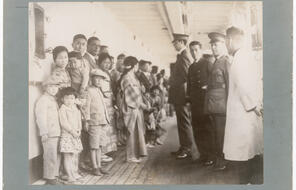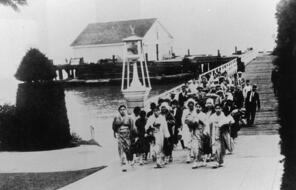
Supporting Question 2: The Impacts of Detention on Immigrants and Their Descendants
Duration
Two 50-min class periodsSubject
- History
- Social Studies
Grade
9–12Language
English — USPublished
Overview
About This Activity
Students explore Supporting Question 2 through a series of activities that help them understand the impact of detention at the Angel Island Immigration Station on immigrants and their descendants. They conclude with a Formative Task that asks them to submit an exit card explaining this impact using evidence from featured sources.
Procedure
Day 1
Day 2
Formative Task
Materials and Downloads
Quick Downloads
Download the Files
Download allSupporting Question 2: The Impacts of Detention on Immigrants and Their Descendants
Supporting Question 1: The History of the Angel Island Immigration Station
Supporting Question 3: Navigating the Borders of National Belonging
Unlimited Access to Learning. More Added Every Month.
Facing History & Ourselves is designed for educators who want to help students explore identity, think critically, grow emotionally, act ethically, and participate in civic life. It’s hard work, so we’ve developed some go-to professional learning opportunities to help you along the way.
Exploring ELA Text Selection with Julia Torres
On-Demand

Working for Justice, Equity and Civic Agency in Our Schools: A Conversation with Clint Smith
On-Demand

Centering Student Voices to Build Community and Agency
On-Demand
















